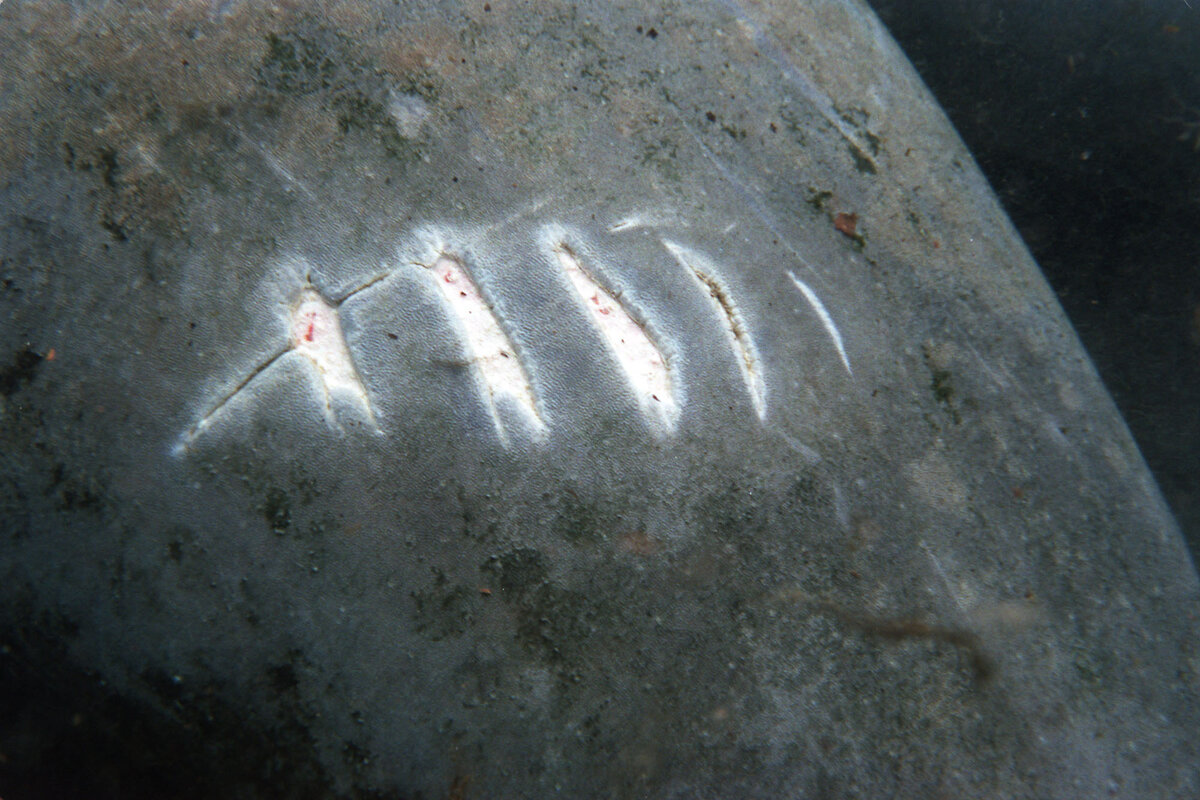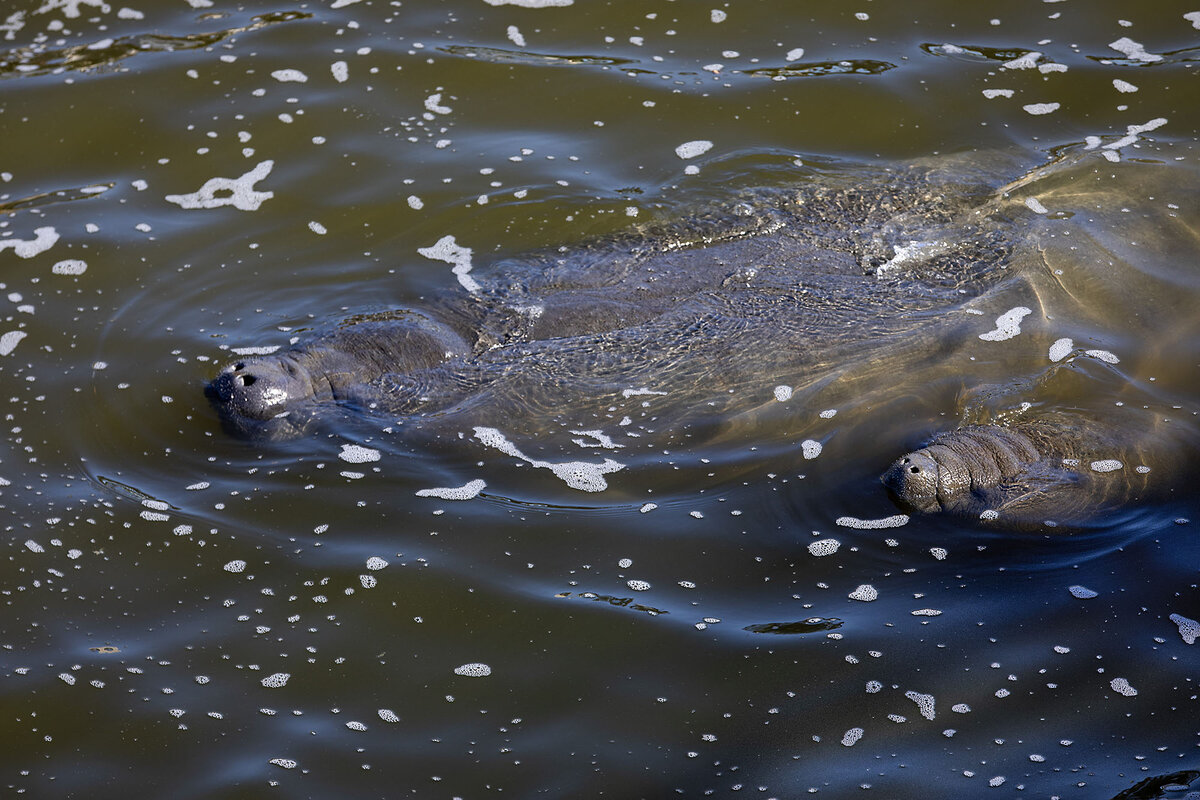Florida manatees find warmth at power plants. They may need a new solution.
Loading...
| Apollo Beach, Fla.
Across a canal from the rusted scaffolding and towering concrete chimneys of Tampa Electric’s Apollo Beach power plant, hundreds of people crowd a boardwalk hoping to spot a manatee.
Sure enough, one of Florida’s “gentle giants,” as the informational signs describe them, lifts a nose into the air and then submerges into the water. Children jostle for a better view. A recorded voice, pumped through speakers along the Manatee Viewing Center’s “tidal walk,” explains that manatees gather here every winter, attracted by the warm water discharging from the coal-fueled plant.
Indeed, as environmentalists here like to say, humans are not the only Florida residents addicted to fossil fuels.
Why We Wrote This
When people alter the natural world, animals are forced to adapt. Sometimes, a solution they discover may itself be threatened, requiring humans to tackle the problem anew.
Over decades, Florida’s rapid development has diverted or drained many of the natural spring systems that manatees historically used for their seasonal migration. The springs, which bubble up from Florida’s groundwater and remain at 70 to 75 degrees Fahrenheit year-round, gave manatees a winter habitat when oceans and rivers cooled below the 68 degrees they need to survive.
Now, with many of these waterways blocked, the animals have increasingly found a winter refuge near power plants and other industrial facilities. The Florida Fish and Wildlife Conservation Commission says close to two-thirds of the state’s manatees depend on these artificial warm-water sources to keep from freezing during winter months.
But the parent company of the state’s largest utility, Florida Power & Light, has announced plans to eliminate carbon emissions from its portfolio by 2045. And other industrial facilities are getting close to aging out of production. So, state officials and conservationists are scrambling to figure out alternatives for the beloved – and threatened – manatee.
The challenge is intertwined with a slew of ecological puzzles in the Sunshine State.
“The protection of the Florida manatee is not just a protection of that one species,” says Ragan Whitlock, staff attorney for the Center for Biological Diversity. “It’s a protection of Florida’s waterways.”
For generations, developers and policymakers in Florida have altered the way water flows in this low-lying state by blocking springs and dredging canals, diverting water for human use, and allowing fertilizer runoff to grow seagrass-blocking algae in lagoons. Now, some spring-fed rivers are dammed, creating boating and fishing destinations.
“Many of the springs have been degraded,” says Elizabeth Fleming, senior Florida representative for the conservation organization Defenders of Wildlife. “Some springs have been lost altogether. The springs on the Atlantic coast of Florida, for instance, they aren’t really there anymore.”
Over the same decades, the state built power plants along its waterways. Those plants often used something called “once-through cooling” to keep electricity-generating turbines spinning, sucking in cool water and discharging the hot water. And the manatees, which could no longer swim back to their 70-degree springs, found a new way to stay warm.
“They’re long-lived,” says Ms. Fleming. “They pass [the information] on to their offspring. So there are generations of manatees that rely on these artificial sources of warm water.”
Federal and state fish and wildlife experts put out a report in 2020 that outlined a Warm-Water Action Plan for manatees, in which they suggested both increased research and monitoring of manatee populations and the need to restore natural aquatic habitats in the state. But conservationists say progress is slow.
Mr. Whitlock and others have asked the federal government to once again list the manatee as an endangered species, a move they hope would bring more resources and attention. Earlier this year, state officials said they are unlikely to do so.
The manatee was taken off the endangered species list in 2017 and labeled as “threatened.” But three years later, hundreds of manatees began dying of starvation in Florida’s Indian River Lagoon. Nearly 2,000 would die out of a state population officials here put at between 8,000 and 11,000.
Most officials linked the deaths to the die-off of seagrass in the lagoon that year, which many experts connect to polluted water.
The deaths, says Pat Rose, executive director of the nonprofit Save the Manatee Club, show the extent of what’s known as the animals’ “site fidelity.” If manatees discover food in a specific location, they will return year after year, regardless of whether nourishment is actually available. The same goes for warm water. If warm-water discharges from power plants go away, experts say, the animals will likely freeze to death before they search for alternatives.
“This shows you how great a problem, and how complicated a problem, this is going to be to find adequate alternative warm-water areas for manatees, and to give them time to teach their young,” Mr. Rose says. “If it’s changed suddenly, then many of them will die … So we’ve got to create these new alternatives while the other warm water is still there.”
Utilities have sent representatives to work with conservationists and state officials on the manatee problem. While some opponents to decarbonization have pointed to the looming challenge as yet another reason to not shift away from fossil fuels to renewable energy sources, conservationists say that climate change itself – exacerbated by greenhouse gas emissions – is also stressing Florida’s environment and the manatee.
With warmer temperatures, “algal blooms grow more powerfully and kill more seagrasses,” says Rhonda Roff, a conservation committee member with the Florida Sierra Club. “We have increasingly severe storms. Those storms include intense winds, including tornadoes that tear up the bottoms of seagrass beds.”
The real solution, she and other conservationists say, is the logistically and politically difficult effort to put nature back together again, by undamming rivers, reducing aquifer draw, and trying to restore Florida’s natural spring system.
“The real issue is water,” she says. “The quality and quantity of water.”










